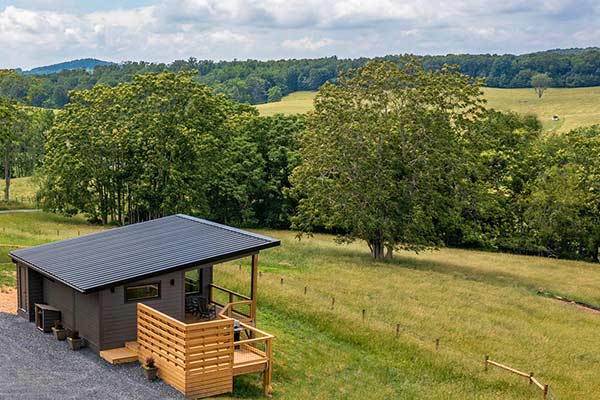In August, parents’ thoughts turn to “back-to-school” and college send-offs! Early August is a last-chance for a family vacation time, and then later in August college-age kids vanish – heading to the college of their choice. If you are in the category of “empty-nester”, August is the time that you are free to start planning special getaways just for the two of you!
The Shenandoah Valley and, more specifically, Steeles Tavern B&B and Alpine Hideaway Cottages is just the place to reconnect with each other and have a fun little learning adventure. Make your plans now for a September or October getaway. If you plan to visit Steeles Tavern in October, you will have the opportunity to attend McCormick Farm Mill Day on October 6, 2018. The 1700’s mill has been fully restored and will be in operation that day. Enjoy music, farm tours, and traditional crafts that day located a three-minute drive from the B&B.
The McCormick Farm has an historical connection to our property! The Cyrus McCormick Farm – one of the Virginia Tech Agricultural Research and Extension Centers – is where one the great agricultural “game changers” was first invented and produced. The grain reaper was first demonstrated on the farm of John Steele, for which the village of Steeles Tavern was named. Walter Searson and his wife Irene Steele Searson built our manor house (Steeles Tavern Manor B&B). Then in 1886 Walter Searson became the manager at McCormick’s farm after Cyrus moved to Chicago to build & manufacturer his reaper. For more than 30 years the Searson family lived and raised 7 children on McCormick’s farm property.
Cyrus McCormick was born in 1809 on his ancestral farm known as “Walnut Grove Farm”. Cyrus first demonstrated the grain reaper in 1831 and patented it in 1834. The grain reaper advanced to become the combine harvester and revolutionized farming in this country and the world! He started producing the reaper or harvester in the farm’s blacksmith shop in Steeles Tavern, moved to Chicago to be closer to the vast fields of the Midwest, and the company evolved into a company that became a manufacturing giant – the International Harvester Company.
In 1954, the descendants of Cyrus McCormick donated “Walnut Grove” to the Virginia Polytechnic Institute and the 5 acres around the family homestead became a museum. Eight of the nine original buildings still exist and are open for tours. The blacksmith shop has displays of various models of the harvester and even miniature models of several variations of the equipment that were used by salesmen as they showed the mechanical reaper to farmers who became buyers of the equipment. Other buildings include the manor house, a gristmill, slave quarters, carriage house, housekeeper’s quarters, a smokehouse, and a schoolroom. The school displays vintage textbooks, school supplies, and toys dating from the 1830’s. The farm was declared a National Historic Landmark in 1964. There is a one-mile long nature trail with signage to give information about the plants, trees, and even the wild honeybees that are active on the farm. There are storyboards telling the history of the area and about the farm.
All of that history and rural beauty is a recipe for fun for your visit to the Shenandoah Valley. Looking to the future, VA Tech uses the farm for education and research. They supply educators in the Mid-Atlantic region with research-based information about soil usage, animal and plant components of forage-based livestock development. They also teach sustainable agricultural practices.
The Cyrus McCormick Farm National Historic Landmark is honored as a place of invention and agricultural production. It has become a research center and a place looking toward the future to make agriculture sustainable in the Mid-Atlantic region.




